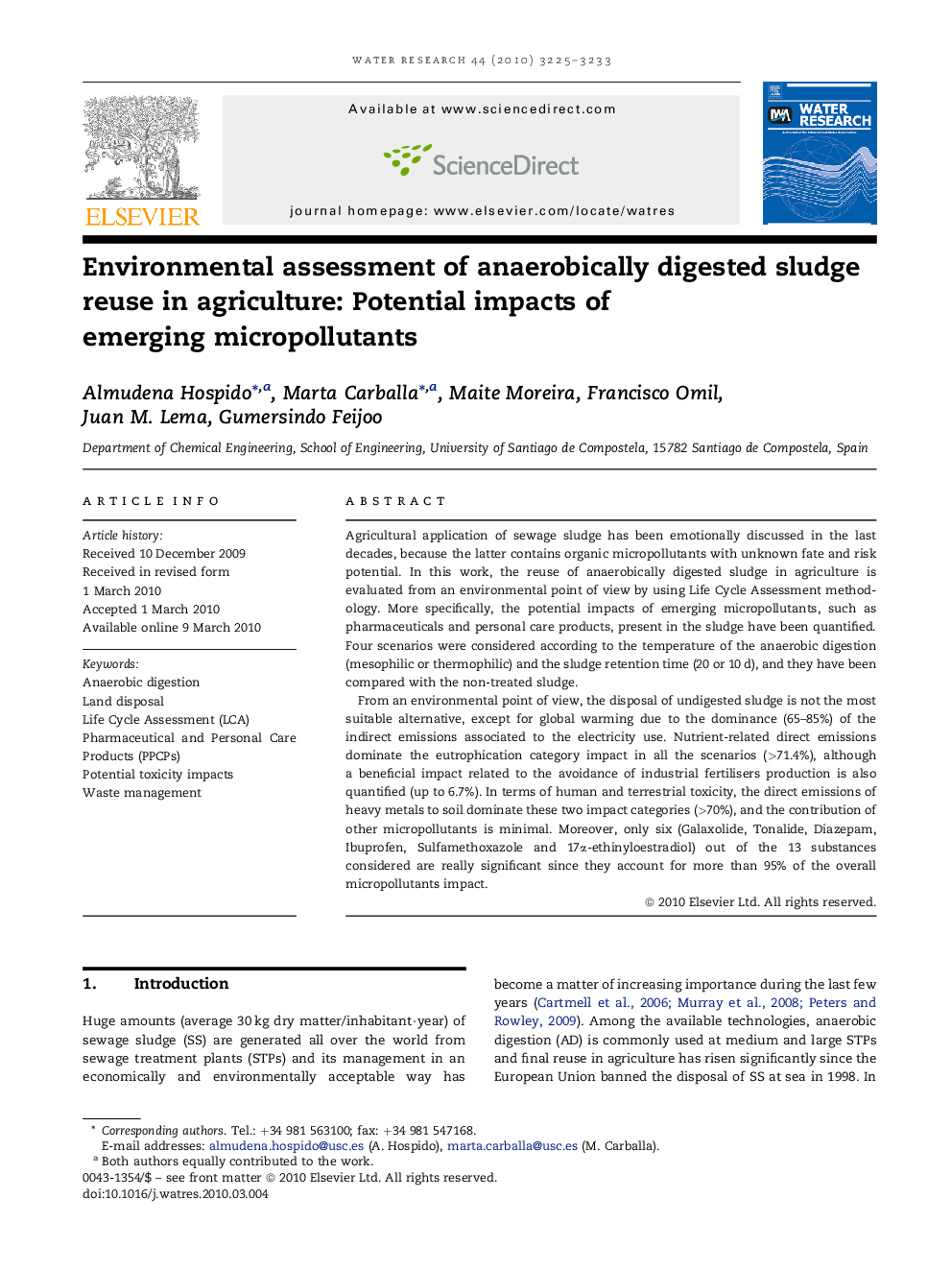| کد مقاله | کد نشریه | سال انتشار | مقاله انگلیسی | نسخه تمام متن |
|---|---|---|---|---|
| 4485093 | 1316940 | 2010 | 9 صفحه PDF | دانلود رایگان |

Agricultural application of sewage sludge has been emotionally discussed in the last decades, because the latter contains organic micropollutants with unknown fate and risk potential. In this work, the reuse of anaerobically digested sludge in agriculture is evaluated from an environmental point of view by using Life Cycle Assessment methodology. More specifically, the potential impacts of emerging micropollutants, such as pharmaceuticals and personal care products, present in the sludge have been quantified. Four scenarios were considered according to the temperature of the anaerobic digestion (mesophilic or thermophilic) and the sludge retention time (20 or 10 d), and they have been compared with the non-treated sludge.From an environmental point of view, the disposal of undigested sludge is not the most suitable alternative, except for global warming due to the dominance (65–85%) of the indirect emissions associated to the electricity use. Nutrient-related direct emissions dominate the eutrophication category impact in all the scenarios (>71.4%), although a beneficial impact related to the avoidance of industrial fertilisers production is also quantified (up to 6.7%). In terms of human and terrestrial toxicity, the direct emissions of heavy metals to soil dominate these two impact categories (>70%), and the contribution of other micropollutants is minimal. Moreover, only six (Galaxolide, Tonalide, Diazepam, Ibuprofen, Sulfamethoxazole and 17α-ethinyloestradiol) out of the 13 substances considered are really significant since they account for more than 95% of the overall micropollutants impact.
Journal: Water Research - Volume 44, Issue 10, May 2010, Pages 3225–3233